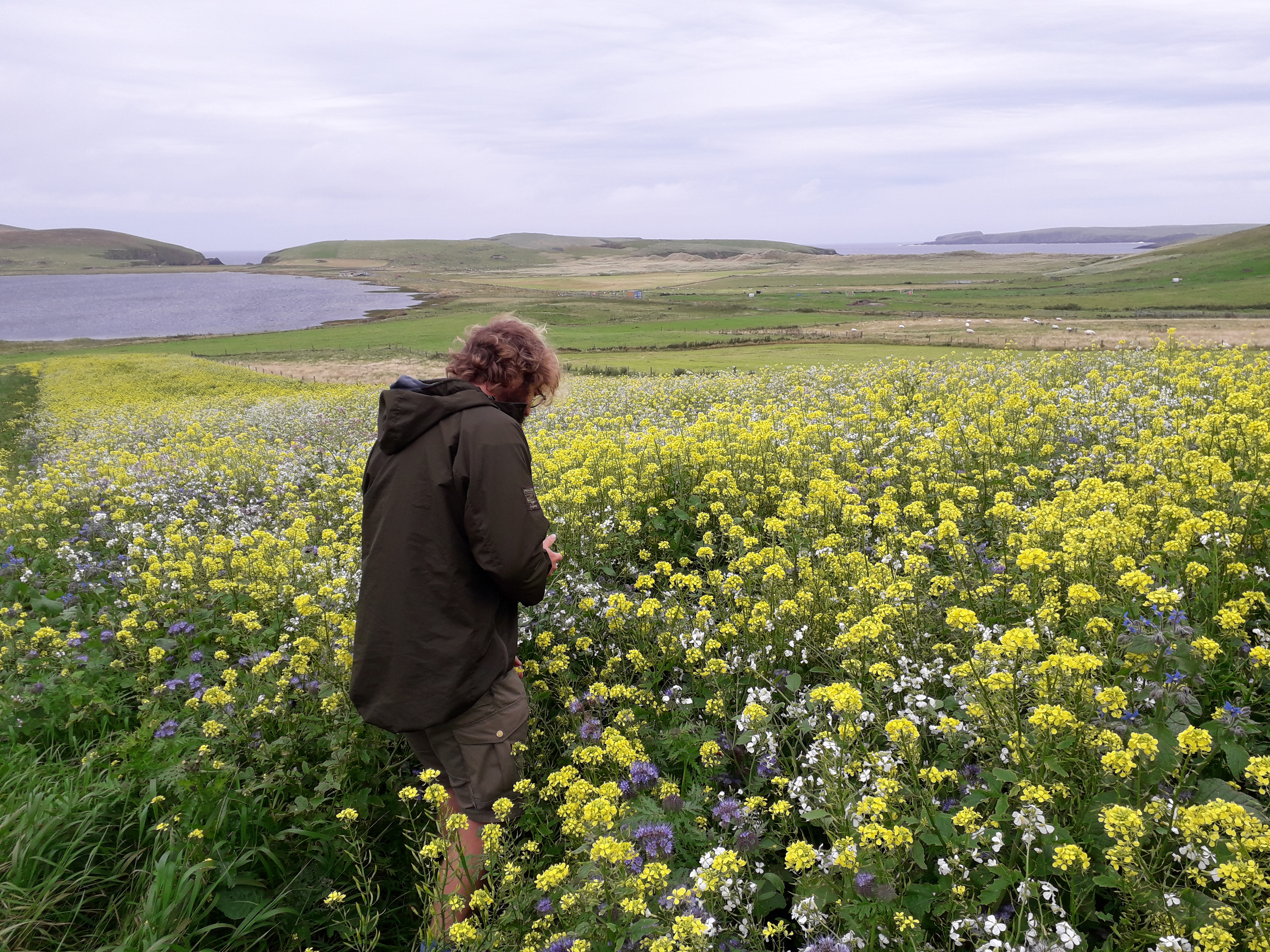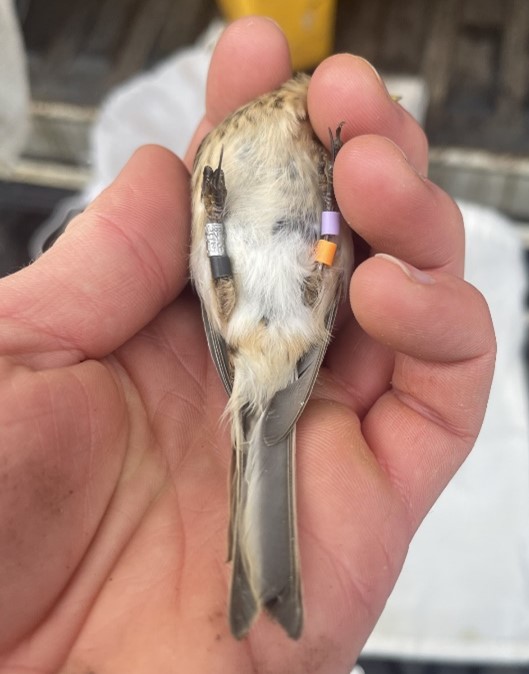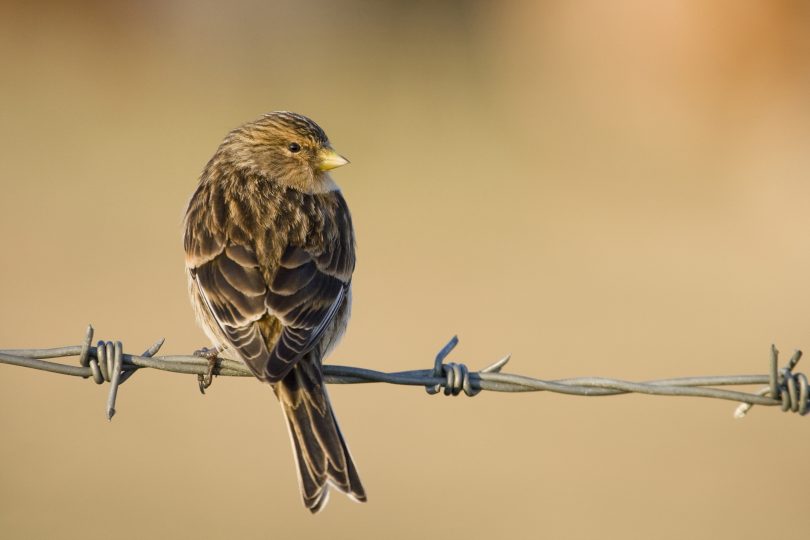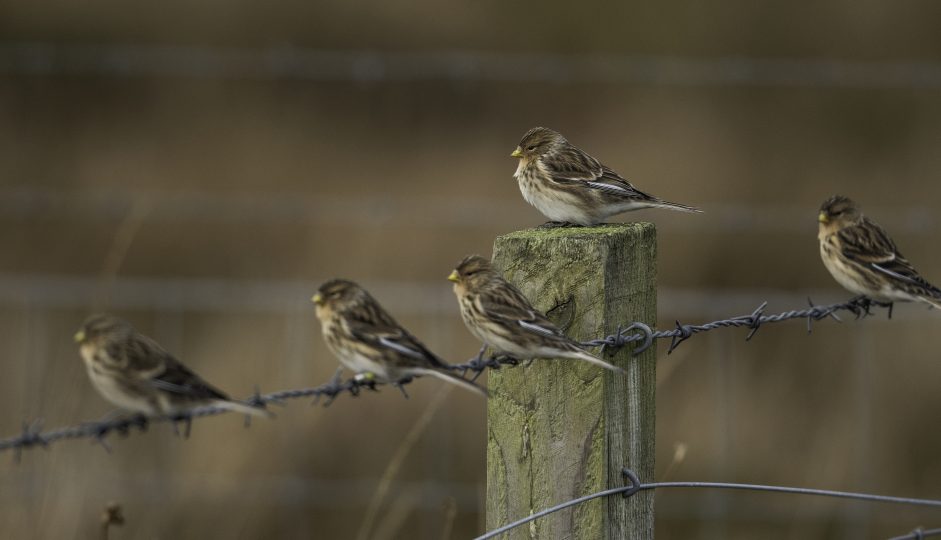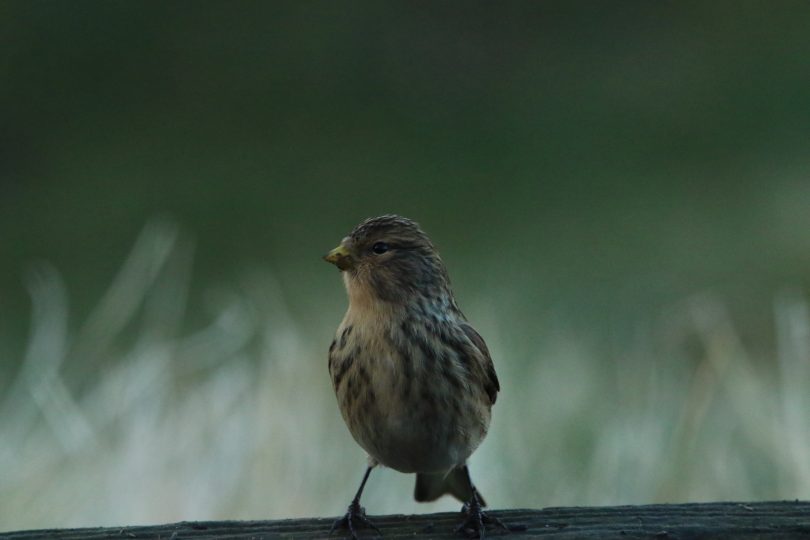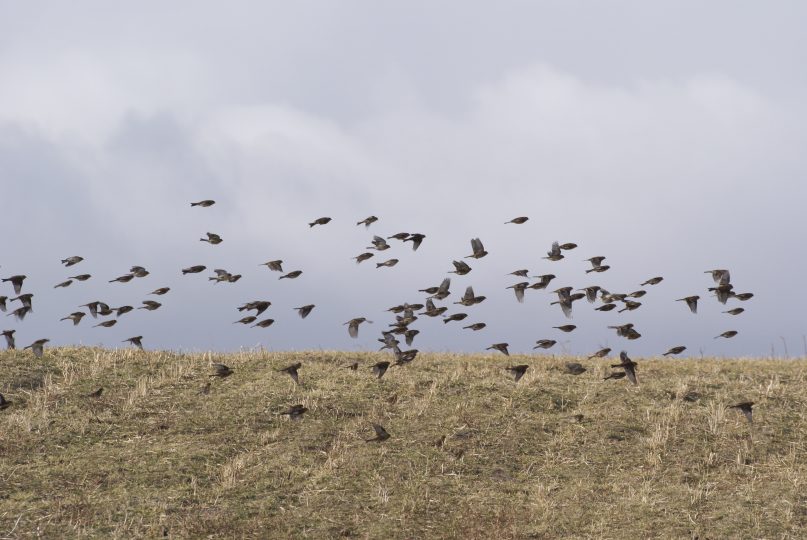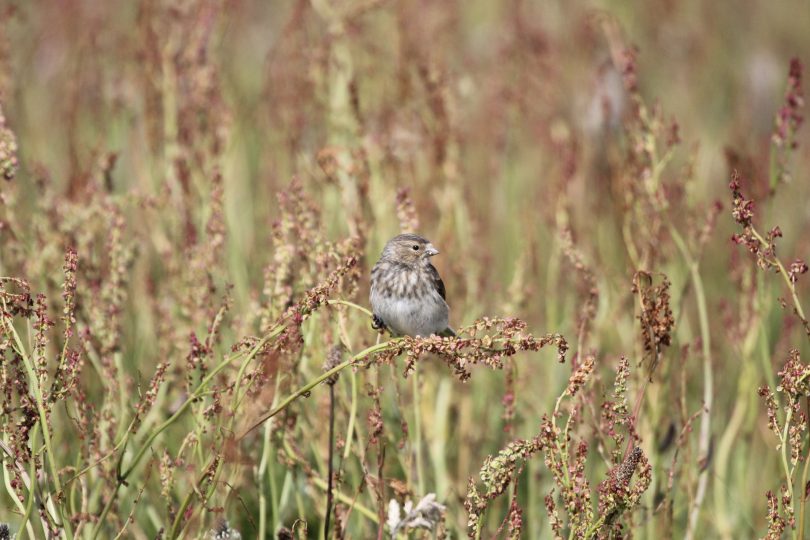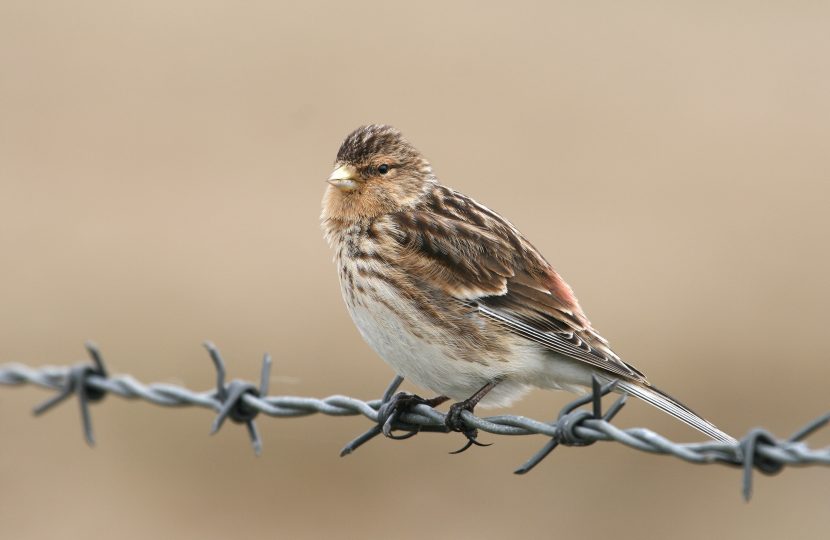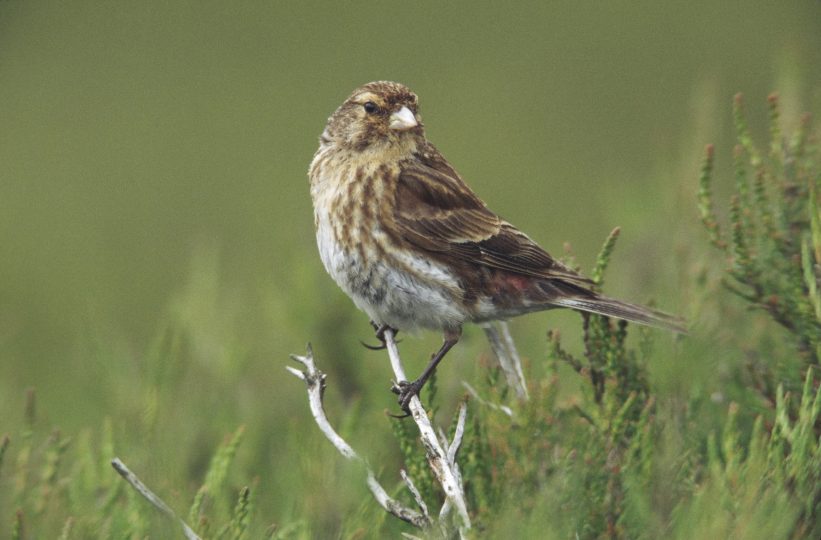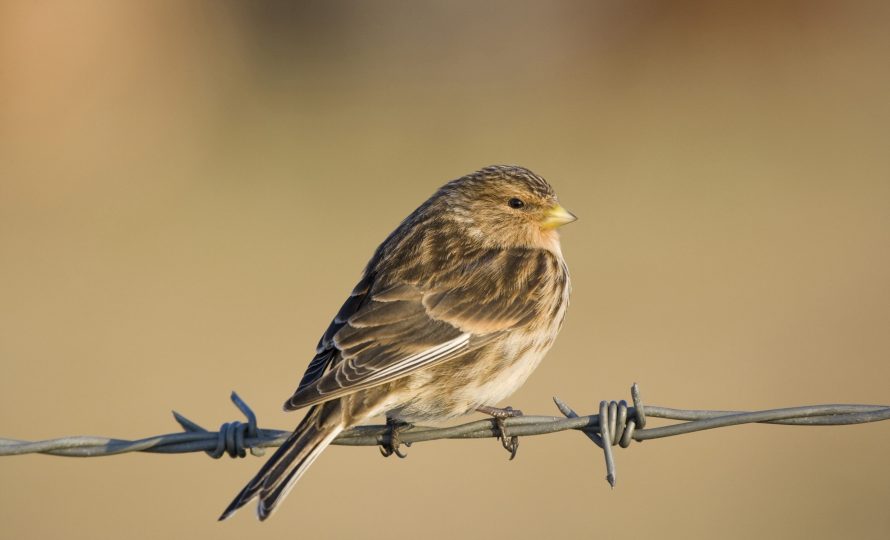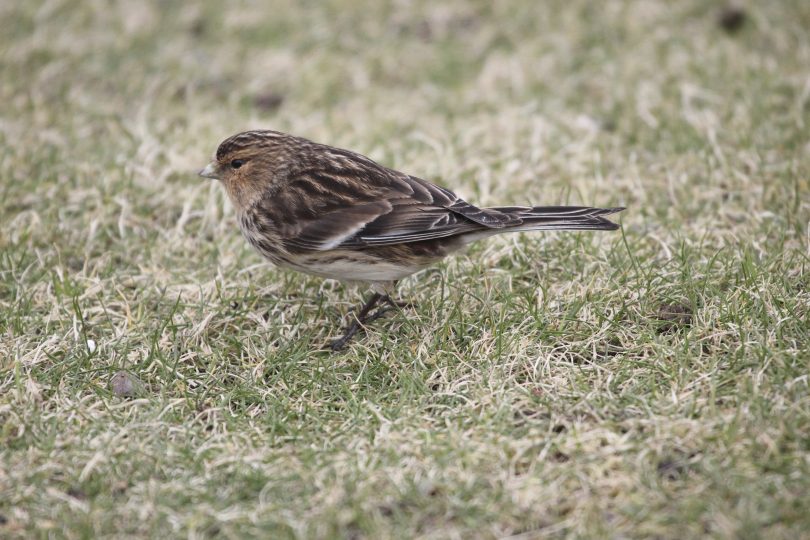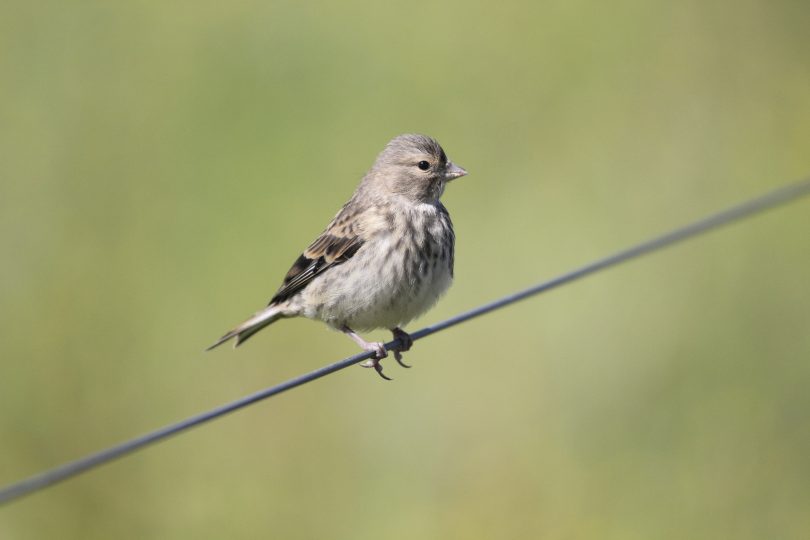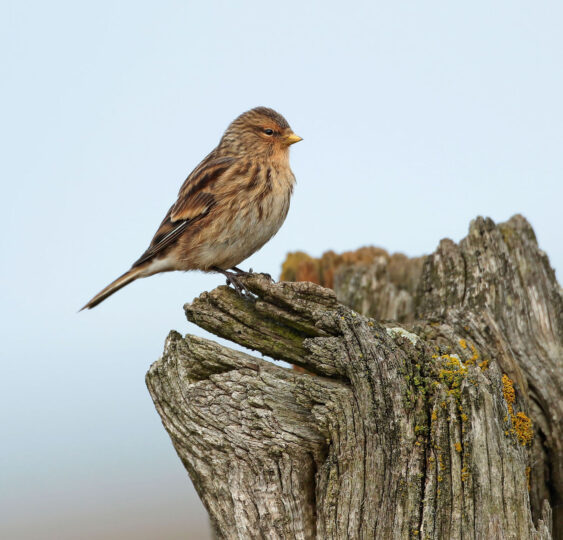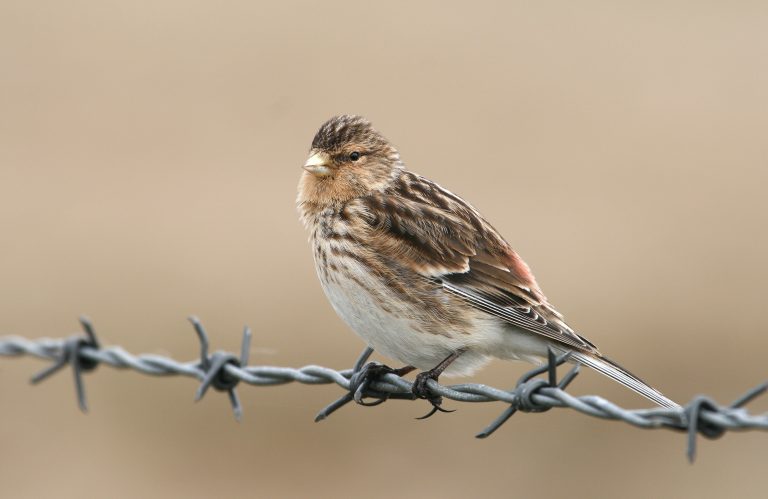
Key facts
- Alternative name: Lintie (Shetland)
- Length: 14cm | Wingspan: 22 – 24cm | Weight: 13 – 18g
- When in the UK: Year-round
- UK Conservation Status: Red
- Species on the Edge areas: Shetland
Species information
How to identify
Habitat and feeding
Habitat
They nest on moorland, but in Northern Ireland and Scotland will also use coastal sites, where they favour crofts. They need cover in which to build their nest, as well as plenty of wildflowers to provide the seeds they eat and feed to their young. Twite often spend the winter on coastal saltmarshes, where they form flocks and sometimes join groups of linnets.
Feeding
Summer: Feed almost exclusively on the small seeds of wild plants, especially of native grasses
Winter: ‘Weed seeds’, especially charlock, are their main diet, in tattie and fodder rape crops
Distribution
In summer they are found in small numbers in the uplands of England and Wales, and coastal Northern Ireland. They are more widespread in Scotland, particularly on coastal crofts in the north and west. In winter, they are found on coastal marshes, with flocks often visiting the east coast of England. In winter, twite numbers are boosted by migrants from continental Europe.
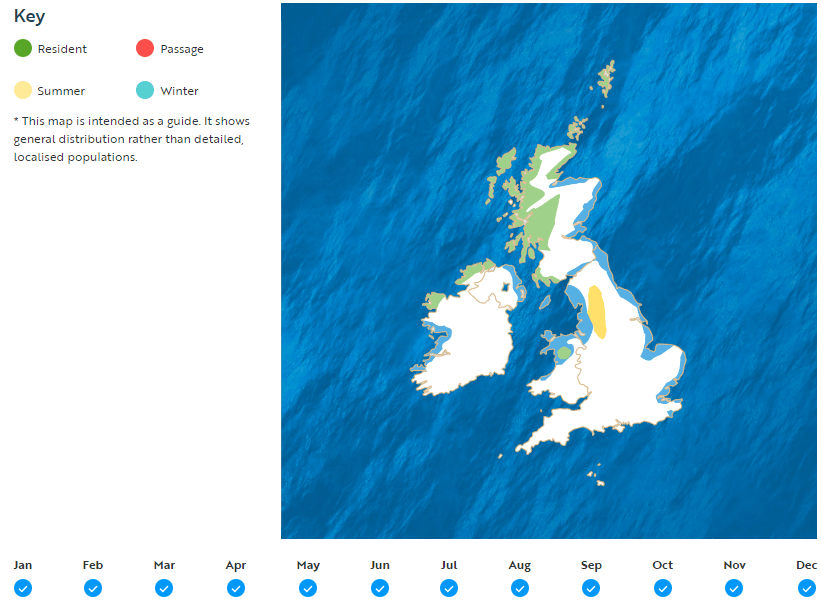
Twite UK distribution map (c) RSPB https://www.rspb.org.uk/birds-and-wildlife/twite
Conservation status
- UK Conservation Status: Red
Threats
In Shetland, twites are threatened by loss of seed-rich feeding habitats through changes in farming practices. Their breeding areas are threatened by intensification of grassland management (re-seeding, overgrazing) in some areas and abandonment in others. Their wintering areas are threatened by loss of extensive arable cropping and inappropriate cutting regimes of flower-rich grasslands (roadside verges).
What Species on the Edge is doing
- Working with landowners to establish ‘Twite crops’
- Carrying out surveys to better understand twite distribution on Shetland
- Twite colour-ringing
Our work for twite
Watch
Crop management for linties and pollinators – Species on the Edge Winter Talk Series
In January 2025, we kicked off our Winter Talk Series with a fascinating discussion on a new and exciting Species on the Edge project in Shetland: bumblebird crops. In this talk, we are joined by Matt Willmott from RSPB who tells us about the project, and crofters Donna Smith and Laura Sinclair who share their experiences of growing bumblebird crops on their crofts.
Watch the full video on YouTube. You can find the transcript of the talk here: Crop management for linties and pollinators | Species on the Edge Winter Talk Series
If you are interested in finding out more about the project and might even want to grow a bumblebird crop yourself, can get in touch with Species on the Edge Shetland Officer, Harry: harry.britton@rspb.org.uk
Resources
- Tackling the decline of Linties in Shetland | Species on the Edge
- Twite: How you can help | Species on the Edge
- Twite | RSPB
- Land management for wildlife: Twite | RSPB
If you want to know more about our work for twite, how to get involved, or how to manage your land for twite, get in touch with our Shetland team.
